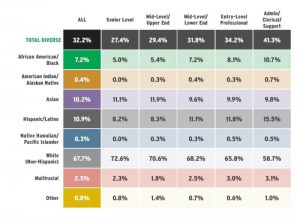
More and more as of late, we find ourselves starting posts with an opening that resembles something along the lines of the following:
“With the rollout of their new _______ application, Facebook appears poised and ready to get into the _______ game.”
The tech giant, as Wired put it quite succinctly, wants to be our “whole world.” Facebook sees themselves as far more than merely a platform for social interactions. Their purchases, research, and rollouts of applications over the past decade have amounted to a long and carefully planned takeover of our everyday lives: from the way we exchange high-quality photos to the way brands advertise to us.
Recently, they announced that their messaging application would be supplemented with a Venmo-style way for users to transfer money back and forth. It was rolled out as a way for friends to transfer money simply and safely, without having to go through the hassle of banking websites or Western Union transfers. For many, though, this was a signal of something bigger. If Facebook was interested in and (more importantly) capable of the technology that would allow these types of transactions, it likely had some very bold and soon-to-be-realized ideas about what it could do for businesses in terms of ecommerce transactions. After all, one might reason, if Facebook could facilitate secure financial transactions between two individuals, why not do the same for transactions between one individual and a company?
Well, if you were one of those who felt that way, a pat on the back is in order – you were right.
Facebook also recently announced a redesign of its “Pages” (Facebook profiles for businesses) format in a way that would make creating digital storefronts not only doable, but easy and user friendly for both the business owner and the consumer. Of course, the marriage of the Facebook Page and ecommerce isn’t completely without precedent. For some time now, businesses have had the ability to build storefronts on their websites. In the past, these storefronts would be reliant on external applications like Ecwid or Storeya. Often, this would make the process feel less organic and would involve extra steps for the user, not to mention cutting off a large percentage of potential shoppers who were wary of trusting any external applications at all.
This has now changed for the better. Now, Facebook will allow businesses to use another application – Shopify – but in a way that works natively within the business’ page. The format of the page will also make room for a multitude of fancy new features. For example, businesses have industry-specific templates for displaying their inventory digitally. If a salon wants to integrate their product listings with their service offerings, they can do so with these new layout changes. Specifically, the business will have the ability to create a “Shop” section where the aforementioned actions can be completed.
The design implementation of these new features is strategically sound, for both Facebook and the small businesses using it for digital storefront creation. The “Shop” and “Services” sections will now have their own tabs at the top of the page, as opposed to being buried at the bottom. As TechCrunch points out, Facebook will also “show a set of highlights from a business’ other tabs. This kind of cross-platform optimization would be tough for a business to do on its own, but Facebook makes it happen automatically.” Herein lies the beauty of what Facebook is offering: a chance to insert your brand into an already-designed, highly functional platform for digital interactions with your customers.
These changes represent Facebook’s attempt to endear small business owners to the idea of putting more importance into their Facebook page than they would a separate website or app. The move makes sense. The owner of a small pizzeria, for example, is forced to contend with the fact that a larger competitor like Domino’s can devote portions of a humongous marketing and development budget towards app-building and mobile UX improvements. This money will lead to things like online ordering options that young customers in 2015 are coming to expect and demand. For the little guy, that kind of budget simply doesn’t exist. But if that same little guy decides to use their Facebook page as the hub of their digital presence, instead of a separate website or app (and what, really, are the chances that he/she’ll have the time to devote to developing an app, after all?), their customers can enjoy the same benefits that the giants can offer.
When Facebook announces new utilities for specific business types or industries, it’s smart to be a bit skeptical about just how mutual the benefit is. For example, their recent Instant Articles rollout inspired major questions about how much autonomy the publishers would enjoy in terms of content and ad revenues. In this instance, though, it truly does seem to be a terrific opportunity for small businesses. Returning to the example of the small pizzeria owner, one can see where the updates to Pages will bring entirely new ways for customers to engage on a consistent basis. Customers of businesses that size – even if they’re regulars – aren’t typically willing to download an entirely separate app for browsing and ordering purposes. They will, though, be willing to engage with the business within the comfortable confines of an app they already know well and use all the time, like Facebook. More and more small business owners are taking advantage of the made-to-order digital platform that a Facebook Page provides them with, and that platform is only getting more hospitable.
The newly redesigned “Shop” options aren’t the only additions to Pages. Facebook is also bolstering its messaging capabilities for businesses. Individuals will now be able to interact on a private messaging basis with brands in real time. This capability has long been available for users to interact with each other, so extending its use for customer-business interactions makes natural sense. Prior to this rollout, customers could merely write a post on the business’ ‘Wall,’, which, depending on the size and customer service skills of the business, didn’t foster a sense that businesses were being held accountable to respond. Now, though, the accountability is built in. If businesses respond to messages within five minutes over ninety percent of the time, they will automatically receive a “Very Responsive” badge on the front of their Page.
These messaging services can be used by business owners to facilitate actual business transactions, especially ones that require a certain amount of dialogue before the purchase is complete. If a service being offered requires customization, Facebook’s “Message to Buy” is a great way to start the dialogue that will eventually result in a purchase.
These are complex ecommerce solutions, ones that small businesses don’t have the marketing infrastructure to implement.
Digital & Social Articles on Business 2 Community
(89)






